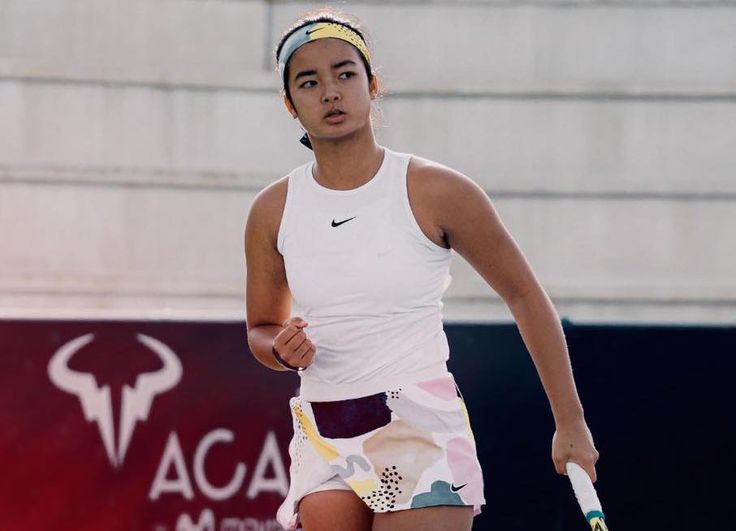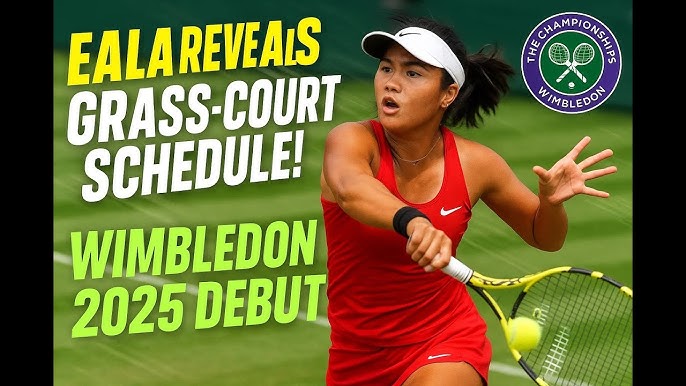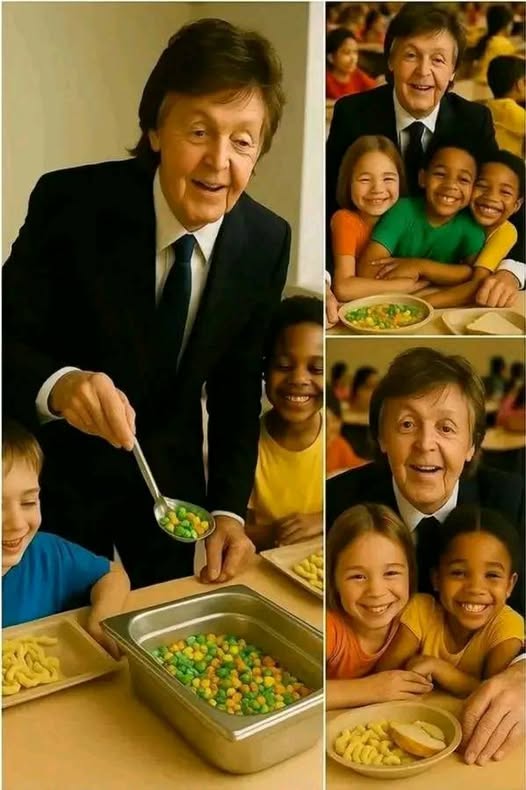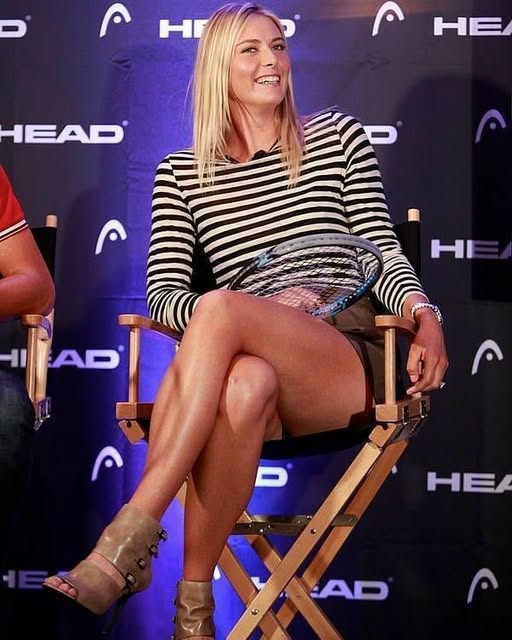🌱 From Clay to Grass: The Journey Begins
As the warm European summer unfolds, a new chapter in the story of rising tennis star Alex Eala begins to take root — not on clay, where she’s proven her mettle, but on the unpredictable, swift green lawns of the grass-court season. With her Wimbledon debut inching closer, the reveal of her grass-court schedule is already generating a buzz among tennis fans, pundits, and Filipino supporters alike.
For many players, grass is the most elusive surface. It requires elegance, precision, and adaptability — qualities that Eala has steadily been developing throughout her young but impressive career. The recent unveiling of her itinerary leading to Wimbledon has sparked hopes, stirred excitement, and perhaps, even signaled the start of a whole new era for the 19-year-old phenom from the Philippines.
📅 Alex Eala’s Grass-Court Schedule: What’s Confirmed?
Alex Eala is expected to participate in a well-curated set of grass-court tournaments in the lead-up to Wimbledon, designed to maximize both her match readiness and familiarity with the surface.
While not seeded for major events like Queen’s or Birmingham, insiders have confirmed the following tentative line-up for her pre-Wimbledon stretch:
- ITF 100k Surbiton Trophy (early June): A key warm-up event known for attracting rising stars and experienced grass players.
- WTA 125 Gaiba (Veneto Open): A hybrid challenge where Eala could gain both points and confidence against mid-tier WTA players.
- Rothesay International Qualifiers (Eastbourne): A potential wildcard entry or qualifying run could give her elite-level grass exposure.
- Practice Week at Wimbledon: Eala is set to participate in several closed-door hitting sessions with top-tier WTA players before her Wimbledon debut.

Each tournament offers something unique — be it rhythm, match toughness, or tactical sharpening. More importantly, this schedule shows that her team isn’t just experimenting — they’re targeting quality experience.
🎾 Why Grass Is a Big Deal for Alex Eala
Grass is not just another surface; it’s an entirely different sport within tennis. The ball skids faster, the bounce is lower, and time to react is minimal. For someone like Eala — whose natural rhythm leans toward baseline exchanges and controlled aggression — the challenge is both thrilling and demanding.
Eala has trained extensively on clay and hard courts, with the occasional indoor stint. But grass? It remains the final frontier. While many young players struggle to adapt, Eala’s maturity and tactical awareness could make her transition smoother than expected.
She’s been quietly working on flattening her forehand, shortening her back-swing, and adding slice to her defensive game — all tools essential for grass-court survival. Add to that her impeccable footwork and court vision, and you’ve got a young player who’s not just preparing to participate but to make an impact.
🇵🇭 A Nation Behind Her
Every swing of her racket represents more than just personal ambition — it reflects the hopes of a tennis-hungry nation. The Philippines has never produced a female Grand Slam singles champion. Yet, in Alex Eala, the country sees more than a contender; they see a movement.
The announcement of her grass-court calendar ahead of Wimbledon sent waves across Filipino social media. From tennis clubs in Manila to cafes in Cebu, the buzz is tangible. “She’s one of us, and she’s going to Wimbledon,” one fan commented online. Indeed, it’s not just about the sport; it’s about representation on a global stage.
💡 Strategic Choices: The Thought Behind Her Schedule
Unlike many young players who rush into prestigious events with minimal preparation, Eala’s team is playing the long game. Her schedule focuses on building comfort and control, rather than chasing wildcards at the cost of readiness.
Here’s why her tournament choices make sense:
- Surbiton Trophy gives her valuable match play without the suffocating pressure of a main-draw WTA event.
- Veneto Open bridges the ITF and WTA tiers — a perfect middle ground for testing grass-court adaptability.
- Eastbourne Qualifiers expose her to the elite without throwing her into the fire too soon.
- Practice Week at Wimbledon ensures she doesn’t walk into SW19 blind.
This isn’t just good management — it’s strategic tennis education at its finest.
👟 The Mental Game: Rising to a New Surface
Adapting to grass isn’t only physical. It’s mental warfare. Miss-hits, uneven bounces, awkward movement — these can break a player’s spirit. But Alex has proven time and time again that her mind is one of her strongest assets.
Remember her US Open junior win? Her composed runs at Roland Garros? She doesn’t panic. She recalibrates.
Her calm demeanor on court, coupled with a fearless drive to learn, will be her biggest weapons during this transition. If she can mentally embrace the chaos of grass, she’ll be dangerous — even to seeded players.

🌟 The Wimbledon Dream: What’s at Stake?
Her Wimbledon debut isn’t just a milestone — it’s a declaration. It tells the world she’s ready to step onto tennis’ most sacred lawn and fight with heart and hustle. While expectations must be tempered — grass rewards experience, after all — Eala isn’t showing up to make up the numbers.
A win or two in the early rounds could catapult her into global tennis conversations. Even a competitive loss against a seeded player would solidify her reputation as a future force on all surfaces.
It’s not about how far she goes. It’s about how she shows up.
📸 Social Media Buzz: Building the Brand of Alex Eala
As soon as her grass schedule dropped, tennis Twitter lit up. “From the courts of Manila to the lawns of Wimbledon!” one post read. Filipino influencers, tennis fans, and even former athletes are hyping up her debut.
Expect her Instagram to be filled with aesthetic shots from London, behind-the-scenes practice clips, and team moments. Eala is already more than a player — she’s a brand in the making. And Wimbledon, with its prestige and global viewership, is the perfect platform to amplify her presence.
🧠 Coach’s Corner: What Her Team Is Saying
While official statements remain scarce, those close to her coaching staff have shared insights. The focus is on rhythm over results. Her team is preparing her for a long-term future on all surfaces, not just a flash-in-the-pan moment.
Their mantra? “Learn fast, compete smarter, adapt quicker.”
With daily film study, grass-specific footwork drills, and mental coaching, they are treating this debut like the start of a five-year grass


